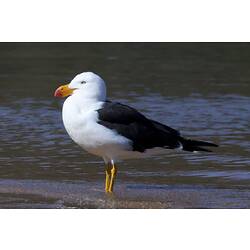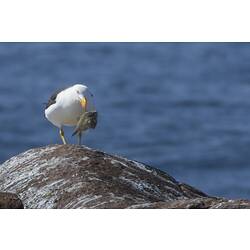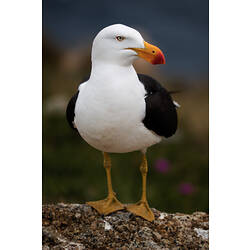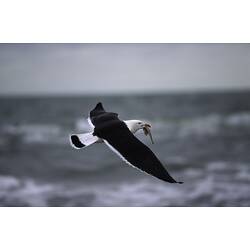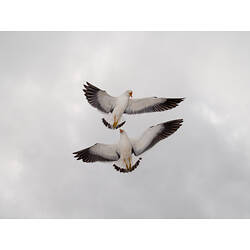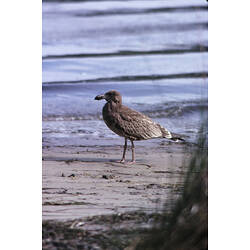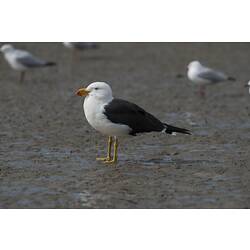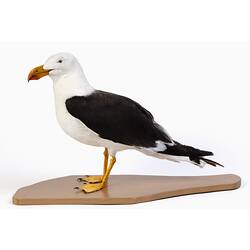General Description
A large white gull with black wings and back. The tail is white with a wide black band near the tip. They have a massive yellow bill with a red tip. Legs are yellow. Immature birds have a dark brown body with mottled pale brown on the upperparts and a dark brown bill. Body up to 66 cm long. Can be confused with Kelp Gulls, Larus dominicanus, but these are smaller than Pacific Gulls, have an all-white tail and a red tip on the lower bill only.
Biology
Pacific Gulls are coastal birds and forage below the high tide line, feeding on fish, molluscs and birds. They often drop molluscs from a height to smash them open on rocks to feed on the soft animal inside. They are often found alone or in pairs. Adults are sedentary, while young birds are highly dispersive. Pacific Gulls breed in single pairs or small loose colonies. They have two types of nests: a shallow cup made from sticks, stalks, seaweed or grasses, positioned in an elevated location, or a shallow depression in the ground which can be lined with small stones. Both parents construct the nest. Females incubate the eggs while males guard the nest and forage for food. The usual clutch size is two to three eggs. The Pacific Gull is the largest species of gull in Australia. A subspecies, Larus pacificus pacificus, is listed as near-threatened in Victoria.
Distribution
Southern and western coasts of mainland Australia and Tasmania.
Habitat
Coasts, beaches, estuaries, bays, offshore islands, coastal farmland, swamps and urban areas.
More Information
-
Animal Type
-
Animal SubType
-
Brief Id
Bulky yellow bill with a red tip and a white tail with a wide black band.
-
Colours
White, Black, Yellow
-
Habitats
-
Diet
Carnivore
-
Diet Categories
Molluscs, Fish
-
Endemicity
-
Commercial
No
-
Conservation Statuses
CITES: Not listed, FFG Threatened List: Not listed, EPBC Act 1999: Not listed, IUCN Red List: Least Concern
-
Taxon Name
-
Common Name
Pacific Gull
-
Kingdom
-
Phylum
-
Subphylum
-
Class
-
Order
-
Family
-
Genus
-
Species Name
pacificus

